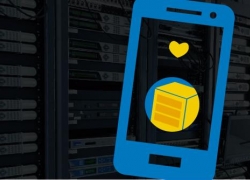Finding the best rack PDU for your data center
Finding the best rack PDU for your data center

Finding data center power infrastructure that's able to supply everything your facility needs (and will need in the future) is a bit like online dating. You have to go through a lot of really bad or just "meh" options before you find something that can go the distance.
Over the years, though, power distribution units (PDUs) have evolved in their depth of functionality and in their customizability. While you may still have to go through some duds before you find a winner, selecting a PDU that can do everything you need it to is in fact easier than ever before.
But to make it even simpler, let's outline a few of the key attributes to consider when searching for the PDU of your dreams.
Start by identifying your power requirements
"It's always better to round up when it comes to PDU power capacity."
First things first: You have to figure out what you need in a relationship ... er ... PDU. On a basic level, this means determining the maximum power throughput necessary to support current power capacities, and ideally plan ahead for future electrical loads. This is especially important considering that, industry wide, rack kW is increasing to support higher-density cabinets. While overshooting on power capacity may seem financially imprudent in the moment, it's always preferable to having to purchase entirely new equipment a few years down the road (and yes, you should definitely get more than a few years our of your PDU – a basic power strip should last a lifetime).
Likewise, consider investing in three-phase power at the rack PDU level. It's superior to single-phase for the following reasons:
- It helps save money on wiring since three-phase power keeps amperage low and voltage high.
- In turn, it can support overall higher power loads than single-phase.
- Load balancing is significantly easier with three-phase than with single-phase.
- It facilitates scalability, which, for all the reasons mentioned above and more, is vital to long-term operational efficiency.
Finally, space is one of the most important resources in any data center. While in some cases the traditional horizontal PDU configuration will be suitable, vertical installations are preferable for high-density racks. They have a smaller footprint, require less cabling and support greater scalability.

Are you looking for smart and dynamic, or basic with integrity?
Modern PDUs come with varying degrees of network connectivity. For many organizations, intelligent PDUs are an asset since they enable remote power monitoring and even remote switching. On the other hand, the most security-conscious businesses may find that basic is still the way to go. To help you make your decision, we laid out the basic considerations for different types of PDUs:
- Basic: This is literally just a chassis with receptacles. Not much to see, but it will get the job done. Not to mention, they tend to last forever since they have fewer integrated electronic components.
- Metered: These PDUs typically provide a graphical user interface that displays real-time power metrics; however, they're still air-gapped from the network. This doesn't mean you have to hunch over the GUI with a pen and paper to collect power data, though. Some metered PDUs now support visible light communication (VLC). Using a secure mobile device, you can literally scan the GUI to instantaneously capture power metrics, and if necessary, export them as a report for your records.
- Monitored: These internet-connected PDUs let you aggregate and view real-time power metrics including voltage, current, power factor and more from an intuitive web interface. They also support interchangeable monitoring devices (IMDs) so that environmental intelligence (temperature, humidity, dew point) can be added. Monitored PDUs allow you to set well-defined thresholds, that, when breached, trigger automatic alerts to notify staff.
- Switched: There is no better way to manage a long-distance relationship with your data center. Switched PDUs let you power cycle individual outlets on the strip from a web interface regardless of your location. If, for instance, you need to turn a server on and off for maintenance reasons, you can do that from a smartphone, even if you're 1,000 miles away from your facility.
As a final note, metered, monitored and switched PDUs tend to be more modular in their build, which makes them inherently upgradeable. For the purposes of adaptability, this is a significant advantage since the individual components can be swapped out as your facility evolves without requiring a wholesale replacement of the PDU.
In other words, they can evolve with shifting circumstances. And as anyone who's trying to maintain a long-term relationship with their PDUs knows, that's kind of a big deal.



